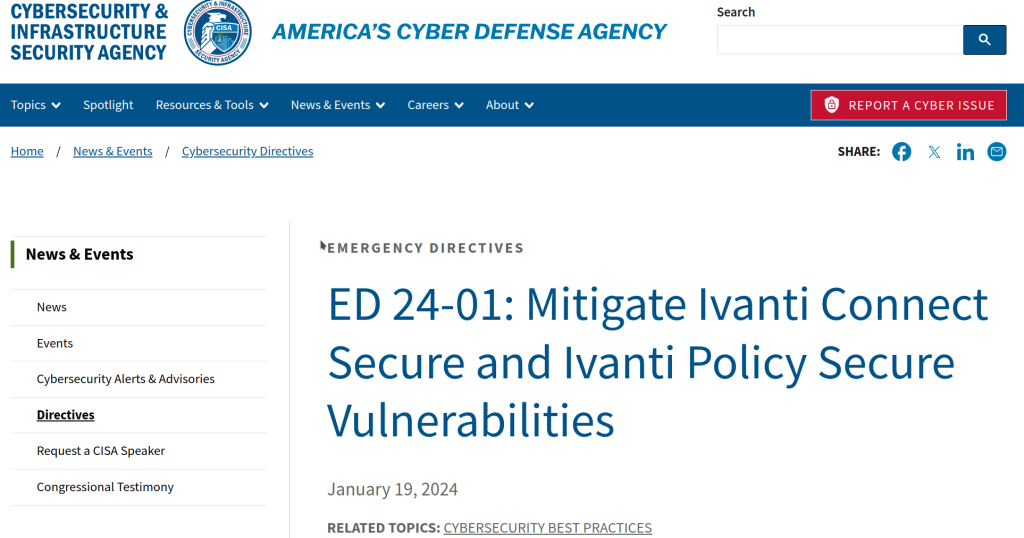In Emergency Directive 24-01 agencies are directed to remove the affected Ivanti Industrial VPN products from service, wipe them, wipe all clients who have used it, reset all identities which have used it. A big ask in a hurry for a big problem which is really happening rather than theoretically might happen.

Of particular concern is the use of this technology as a means of bridging access to industrial control systems, allowing attackers access to broadly critical infrastructure. The particular vulnerability (CVE-2024-21893) relates to SAML, an authentication and authorisation protocol, use in the Ivanti Connect Secure, Ivanti Policy Secure and Ivanti Neurons for ZTA products. These products function by having full access to everything, and then gateing users on/off for that access.
Now, zero days happen, and will continue to happen. The combination of complex software and high effort expended to find them makes that nearly impossible to resolve by itself. But, there are strategies (philosophies) which can de-risk. The primary strategy is Defense In Depth. In this mindset, instead of 1 big wall (the Maginot Line) that is the sole source of security, you instead think of “they will get in, how to slow them, make them more observable, have fallback positions”. Its not a new idea, the keep in a medieval castle has the same function.
Defense in Depth requires observation points (so you can see it happening, tripwires if you will). It requires multiple points of enforcement in series, and, it requires thinking of Authentication, Authorisation, Access as <User>-<Resource> rather than <User>-<Location>. E.g. it requires you to ditch the VPN as means of providing layer-3 adjacency. The VPN, conceptually a long Ethernet cable, means that one breach and all are suspect, rather than one breach and one is suspect.
Administrators are always going to have to hot-foot it around “patch the world” vs “downtime again”, and Defense In Depth gives you a bit more time. More time is less risk. It means that when the bad happens (and not if), the bad happens in a smaller blast radius. And this can be the difference between being in the news, vs merely a bit tired from the sprint to finish of patch patch patch.
The architecture in a typical industrial control system is usually the Air Gap: 1 big wall, and inside no security to speak of. A world of telnet without passwords, of modbus with no particular security model. And, when the Air Gap is straddled by something like this Ivanti VPN, you find that suddenly, some internal segmentation and controls, as well as a more fine-grained Air Gap straddle, is a good thing.
If you would like to discuss a finer-grained, more defense in depth, Zero Trust type approach as personified by Agilicus AnyX, well, contact me!
